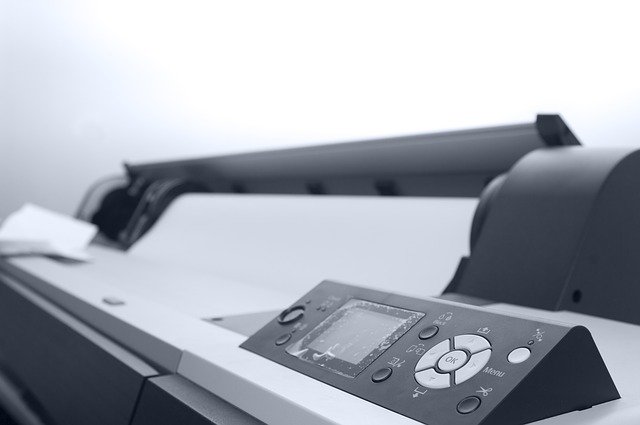Finding the appropriate printing technology for your needs may have a significant influence on the quality, speed, and cost of your printed products, making it a crucial decision for any small company owner. Inkjet and laser printing are now two of the most widely used printing methods. In order to make the best choice for your company, this article will present a thorough comparison of the two technologies in question. We’ll also discuss inkjet printing’s potential effects on local enterprises and its use by commercial printers.
Inkjet Printing: Overview, Advantages, and Disadvantages
Inkjet printers create high-resolution prints with true-to-life colors by spraying ink onto the printing surface in microscopic droplets. They’re well-liked for their adaptability and the fact that they can print on a wide range of substrates, from paper and cloth to plastics.
Advantages of Inkjet Printing:
High-quality prints: Inkjet printers are capable of producing photo-quality prints with vibrant colors and sharp details, making them an excellent choice for marketing materials and promotional items.
Versatility: Inkjet printers can handle a wide range of print materials, from plain paper and glossy photo paper to fabric, canvas, and certain plastics, offering flexibility for small businesses with diverse printing needs.
Lower initial investment: Inkjet printers are generally more affordable than laser printers, making them an attractive option for small businesses with limited budgets.
Disadvantages of Inkjet Printing:
Slower print speeds: Inkjet printers typically have slower print speeds compared to laser printers, which could be a drawback for businesses with high-volume printing needs.
Higher ink costs: Although inkjet printers are often cheaper upfront, the cost of ink cartridges can add up quickly, especially for businesses that print frequently.
Laser Printing: Overview, Advantages, and Disadvantages
Images are produced by a laser printer by applying heat and toner (a fine powder) to the printing surface. These printers are frequently chosen by enterprises with high-volume printing demands because of their quick print rates, clear text, and streamlined operation.
Advantages of Laser Printing:
Fast print speeds: Laser printers are typically faster than inkjet printers, allowing businesses to complete print jobs more quickly and efficiently.
Lower cost per page: While the initial investment for a laser printer can be higher than that of an inkjet printer, the cost per page is often lower due to the longer-lasting toner cartridges.
Crisp text and graphics: Laser printers excel at producing sharp, clean text and graphics, making them a great option for printing professional documents, reports, and presentations.
Disadvantages of Laser Printing:
Higher upfront cost: Laser printers often have a higher initial investment than inkjet printers, which may be a barrier for some small businesses.
Limited color capabilities: While color laser printers are available, they may not offer the same level of color accuracy and vibrancy as inkjet printers.
What About Commercial Printing?
Offset printing and other large-scale printing technologies have long been the bread and butter of commercial printing operations. However, as inkjet printing technology has progressed, more and more commercial printers are turning to inkjet solutions for specific tasks. There are a number of ways in which this change affects small businesses:
Greater access to high-quality printing: Small businesses can now enjoy the benefits of high-quality inkjet printing at commercial scale, making it more accessible and affordable for their marketing and promotional needs.
Shorter turnaround times: Inkjet printing allows commercial printers to offer shorter turnaround times, providing small businesses with faster access to their printed materials.
Customization and personalization: With inkjet printing, commercial printers can offer greater customization and personalization options, enabling small businesses to create unique and tailored marketing materials that help them stand out in a competitive marketplace.
Environmentally friendly options: Inkjet printing can be more eco-friendly compared to traditional printing methods, as it uses fewer chemicals and produces less waste. This can be an attractive selling point for small businesses looking to align with sustainability values and appeal to eco-conscious customers.
How to Choose the Right Type of Printer
When deciding between inkjet and laser printing for your small business, consider the following factors:
Print quality: If your business requires high-quality, photo-realistic prints with vibrant colors, an inkjet printer may be the better option. However, if you prioritize sharp text and graphics, a laser printer might be more suitable.
Print volume and speed: If your business has high-volume printing needs or requires fast turnaround times, a laser printer’s speed and efficiency might make it the better choice. On the other hand, if your printing needs are more sporadic or low volume, an inkjet printer could suffice.
Budget and cost per page: Assess your initial budget and the ongoing costs of consumables, such as ink or toner cartridges. While inkjet printers typically have a lower upfront cost, laser printers often have a lower cost per page, which may be more cost-effective in the long run for businesses with frequent printing needs.
Material versatility: If your business requires printing on various materials, such as fabric, canvas, or certain plastics, an inkjet printer’s versatility may be more advantageous.
Customization and personalization: If your business values customization and personalization in your printed materials, inkjet printing technology can offer more flexibility in this regard.
Conclusion
The quality, cost, and efficiency of printed products can be greatly affected by the printing technology your small business decides to use. You may make the best choice for your company by weighing the pros and downsides of inkjet printing against laser printing, as well as the consequences of inkjet printing in commercial printing enterprises. Whether you go with an inkjet or laser printer, your marketing and advertising efforts will be more successful if you strike a good balance between quality, speed, and cost.




